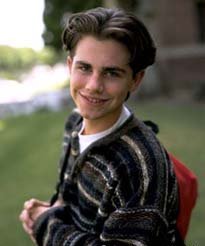“Judas and the Black Messiah”, releasing on February 12 of this year, is an inside look at the Black Panther Party and its fight for racial justice in the United States.
The BPP revolutionized Black Power and was an essential cog in the wheel of the Civil Rights Movement in the 1960s. Their impact went far beyond legislation and politics, but created an aesthetic which is still highly visible today in pop culture artifacts such as fashion and music.
The Fashion of the Black Panther Party
For the Black Panthers, everything had to make an impact. They didn’t have the luxury of wasting any portion of themselves or their lives on something that wasn’t making a statement. Everything had to be political, including their wardrobe.
Charlese Antoinette Jones, the costume designer of “Judas and the Black Messiah,” was tasked with the job of recreating the wardrobe of the Illinois chapter of the Black Panthers. Her in-depth creative process required a lot of research, and she relied mostly on documentaries and being able to break down people’s wardrobes in photos.
80-90% of the wardrobe in the film is sourced and original from the ’60s, Jones says. They found original pieces from places such as Cincinatti, Cleveland, Los Angeles and different dealers in the South.

Different chapters of the BPP, Jones says, had different uniforms and clothing guidelines.
“We’re most familiar with the uniforms of the Oakland chapter: Pale blue shirts, leather jackets, sunglasses and berets,” says Jones. “The shirts and the jackets were chosen because they were pieces almost everyone already owned, and the sunglasses paired with the hats provided anonymity to conceal their identities.”

The Illinois chapter of the Black Panther Party took a similar approach with their uniforms. They wore repurposed World War II army jackets with the US Army patch removed and berets.
These uniforms served a greater purpose than just an aesthetic. The Black Panthers had to choose their clothes specifically to stand up to the system they were fighting. Berets, for example, were chosen because they are an international symbol of revolutionaries. The camo green jackets were worn as they were readily available, but were also worn as a sign of protest.
The Illinois Chapter of the BPP was formed late in 1968, roughly the same time as the Vietnam War. The repurposed army jackets were worn to not only protest the war in Vietnam but the war that black Americans were facing at home. 1968 is also classified as the end of the Civil Rights Movement. African Americans were at war with their white neighbors, colleagues and government. The Chicago Police were at war with black Americans in Illinois.
Challenging Western Beauty
The Black Panthers revolutionized social justice, but in the process, they also revolutionized beauty standards.
Ebonee Davis, a supermodel and activist, is known for challenging eurocentric standards of beauty in her work. She suffered as a model at the hands of people who did not know how to style black women’s hair or bring the correct foundation shades for darker women.

“I cannot tell you how many times I left a photoshoot with my face painted gray or pieces of my hair ripped out,” Davis says.
Davis started wearing her naturally as a way to finally obtain some autonomy, which was not a “conscious choice” of activism on her part, but was certainly an important moment in the Black is Beautiful Movement, which Davis says was born out of the Black Power movement.
At her TEDTalk in 2017, she discussed the images of eurocentric beauty she was bombarded with as a child and how they deeply affected her self-worth and unpacked “images of colonial beliefs and ideals that didn’t belong to her.”
The COVID-19 pandemic, Davis says, has been a revolutionary time for black women.
“We live in a society that is constantly telling us to be busy,” she says. “Rest is revolutionary for black women; we never had the chance to put our feet up and take care of ourselves.”
Davis says she and other black women are “collectively awakening to that consciousness.”
“Who are we?” she asks. “Who am I outside of beauty standards?”
Musical Inspiration from the BPP
The Black Panthers’ influence goes far beyond fashion and beauty. Many black artists were influenced by the BPP, including many hip-hop and rap artists we know today.
Chuck D, a hip-hop and rap artist known most widely for his work in the popular Public Enemy, says that the Black Panthers were a major influence on him during his upbringing. This influence later carried into his music, which is highly regarded for its “conscious rap being brought to the forefront.”
Chuck saw the work of the Black Panthers at his grandmother’s in Harlem during the summer, and at the African American Experience, a summer program run by the BPP, where he says they were actively seeking to improve the lives of black youth.

Public Enemy was formed in 1986, and the members of the group grew up in the formation of rap music. By this time, hip-hop was becoming popular and was a driving factor behind the formation of the group.
Public Enemy had the ability to add imagery and influential people into its sound, lyrics and style, and the Black Panthers were woven right into their aesthetic.
“We had the longevity to say we can take what we grew up with and put it with this new thing we love,” Chuck says. “Public Enemy was taking notes from their (the Black Panthers’) background.”
Chuck D knows that revolution means serious change, and he doesn’t want anyone thinking they’re too young to make an impact.
“Don’t tell the 22-year-old they can’t do it,” he encourages. “They (the Black Panthers) were 26 and 27 years old making the culture.”






3 Comments